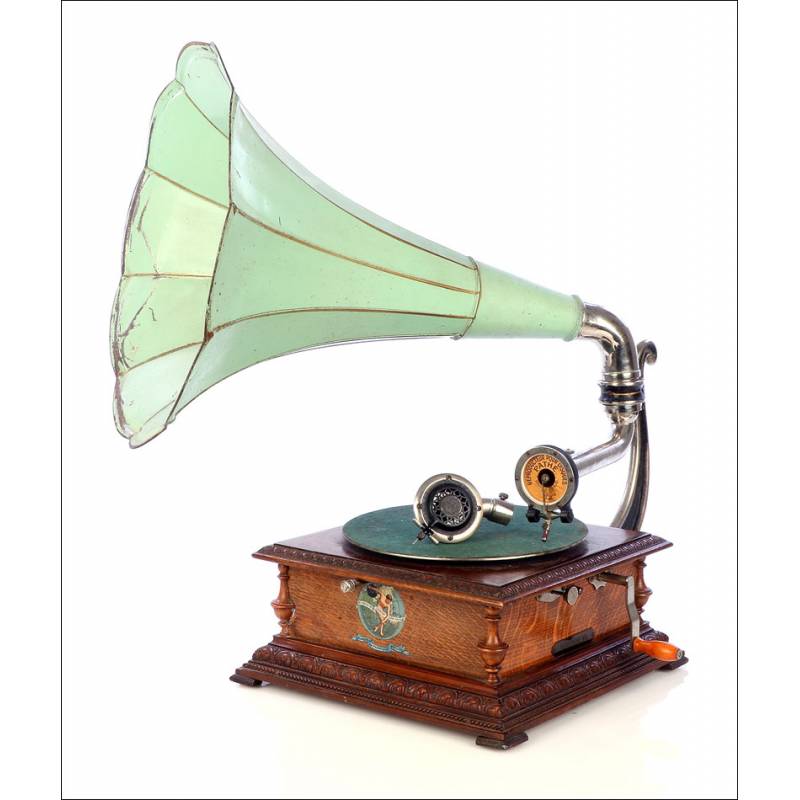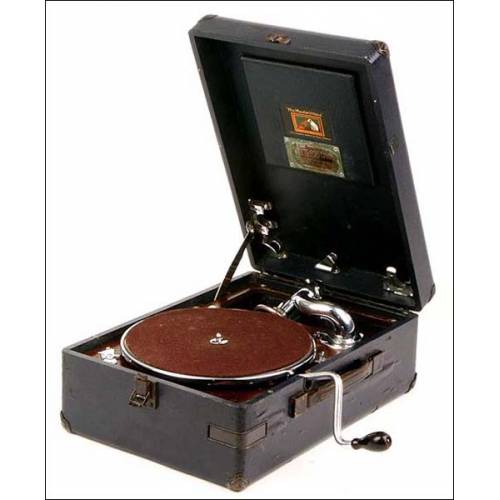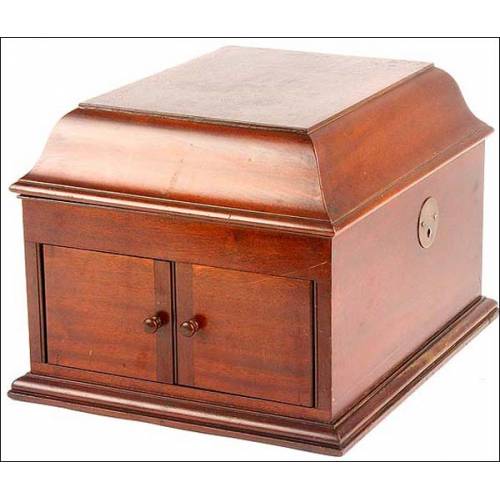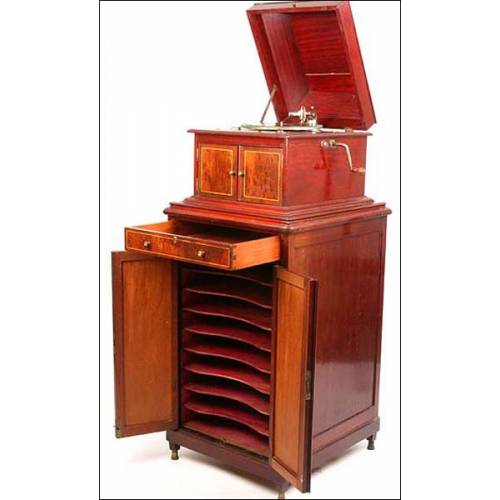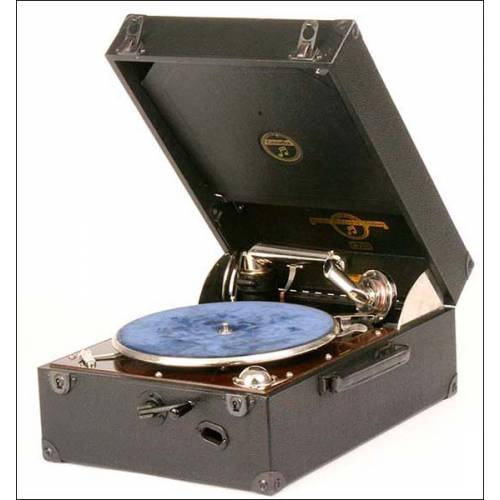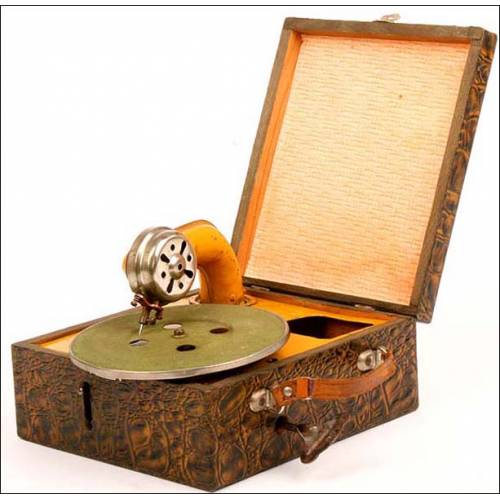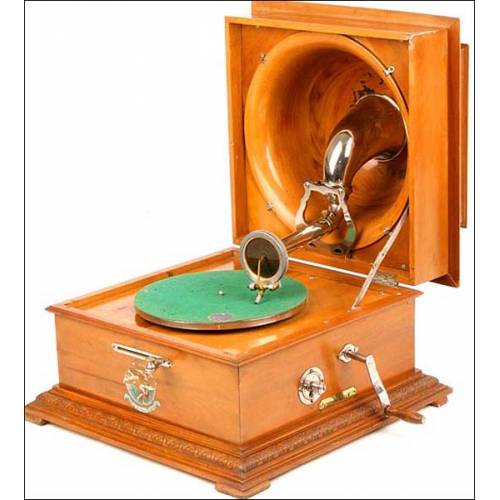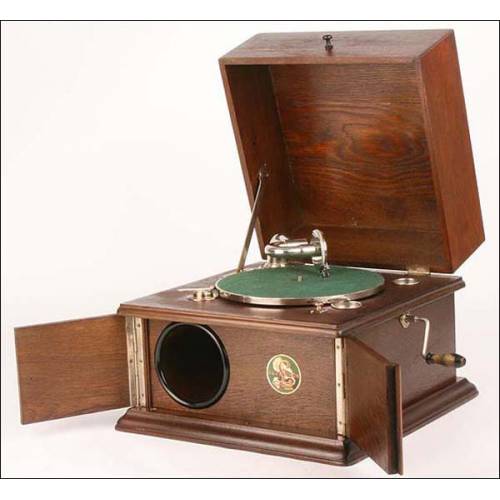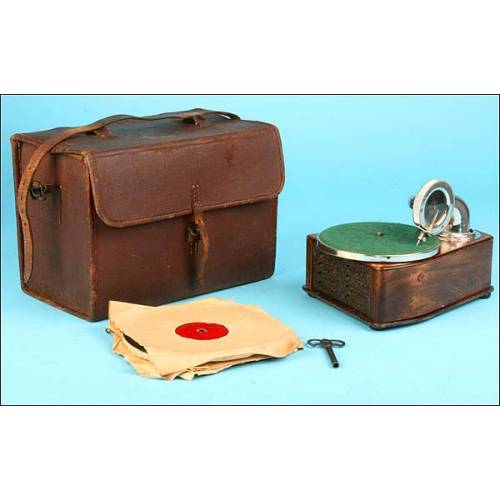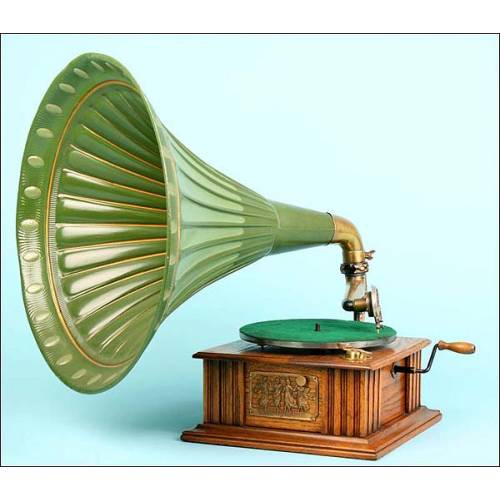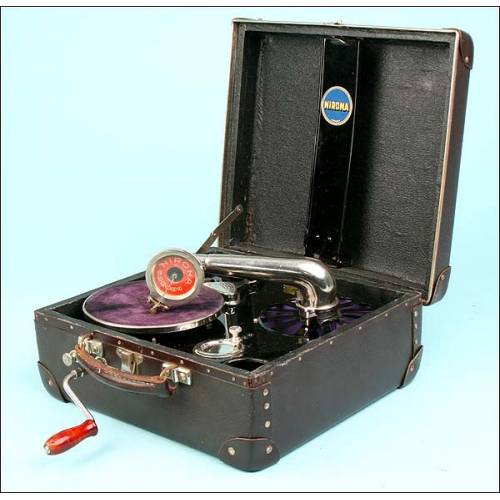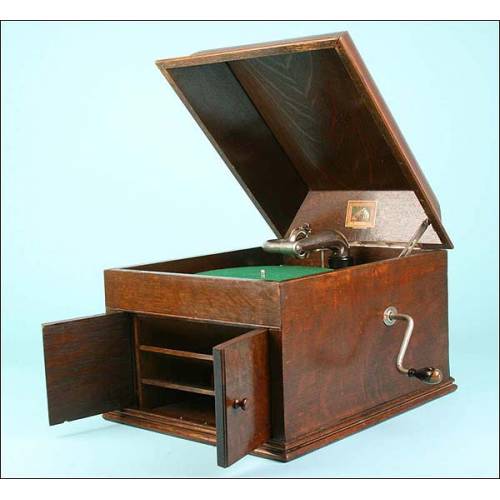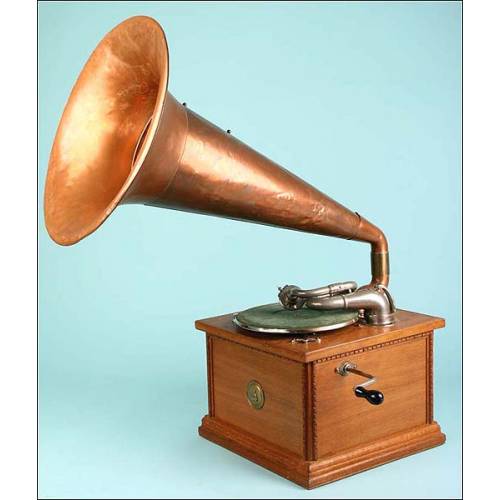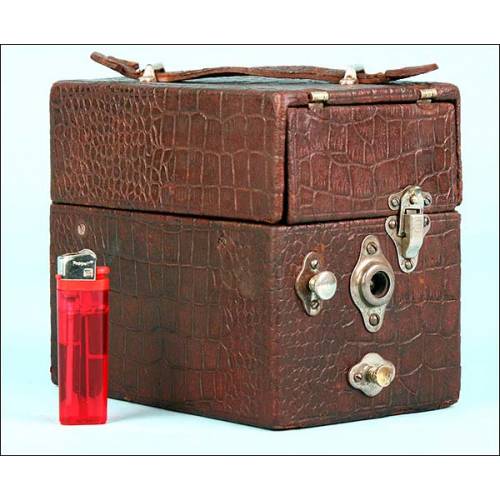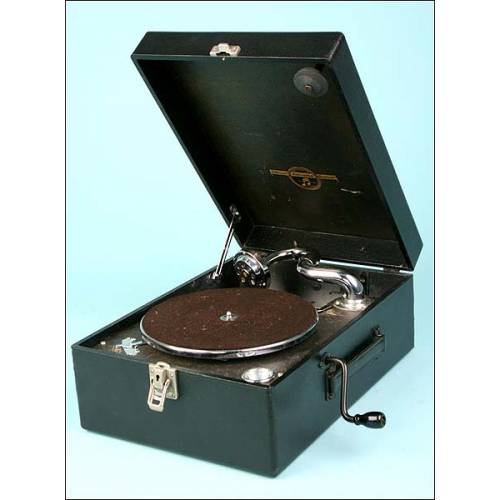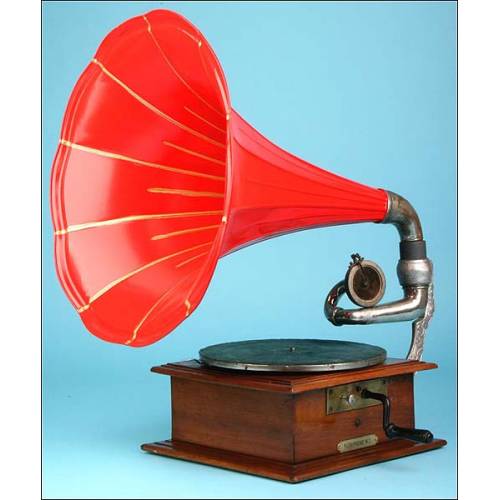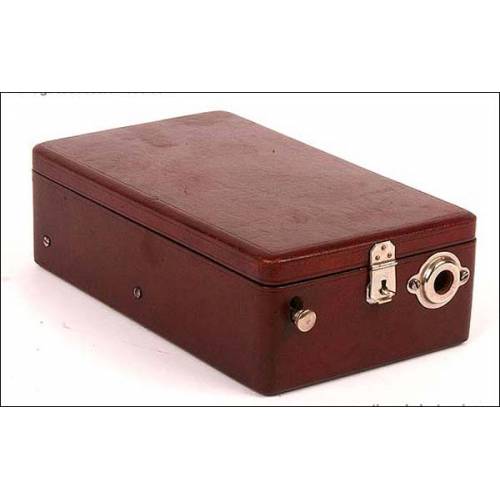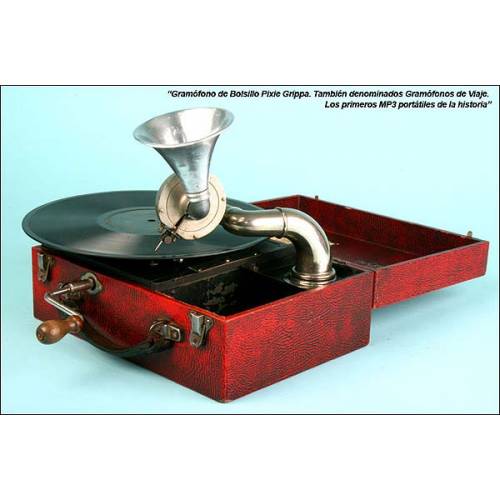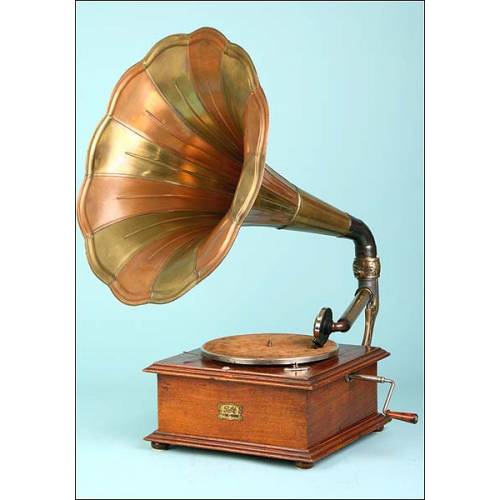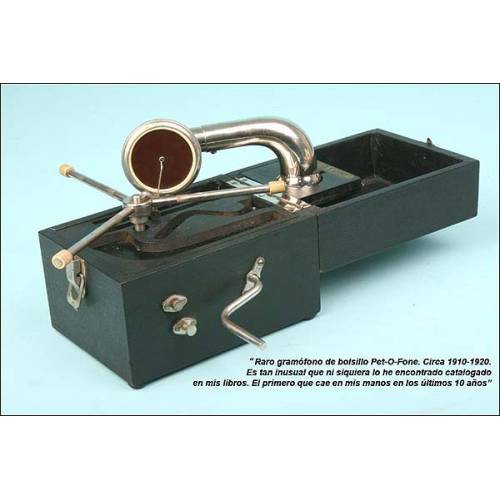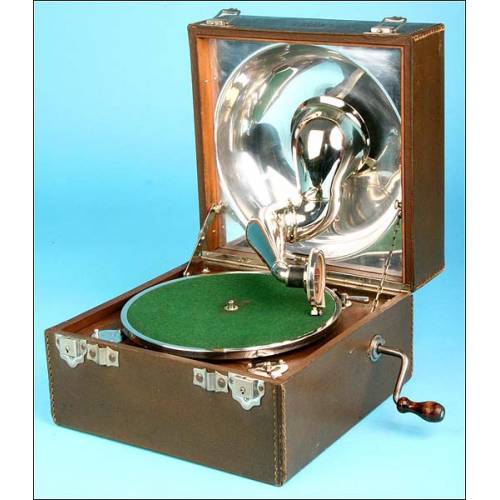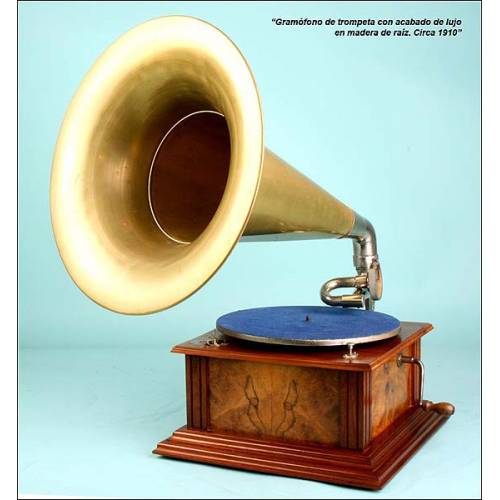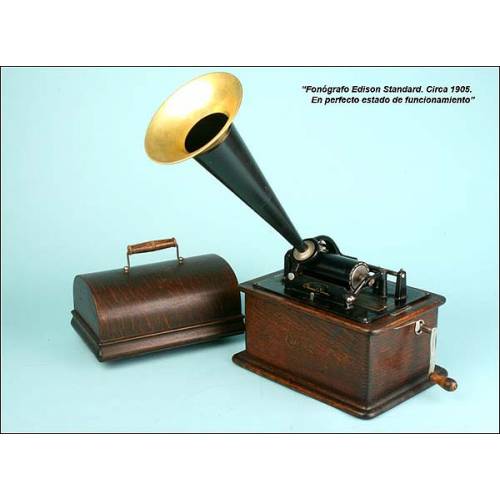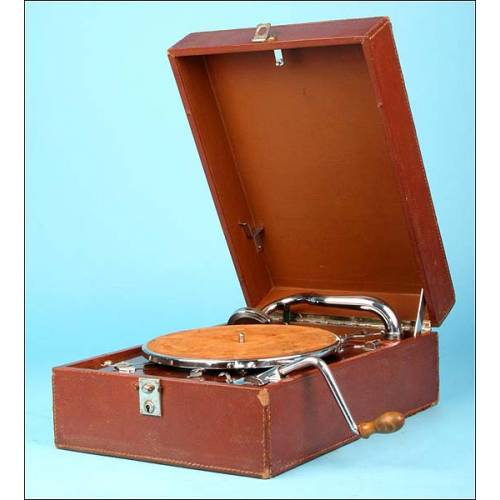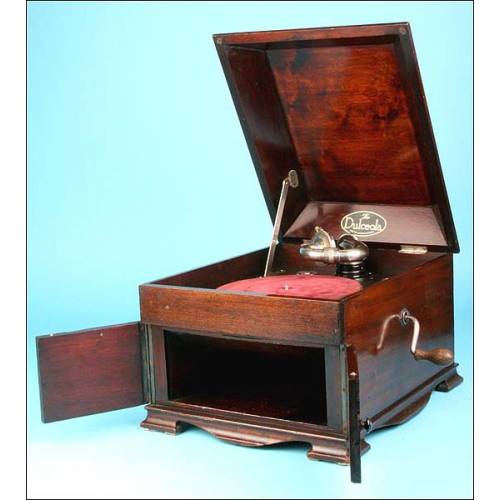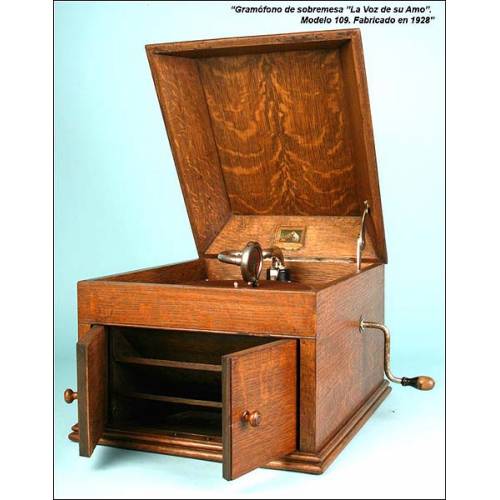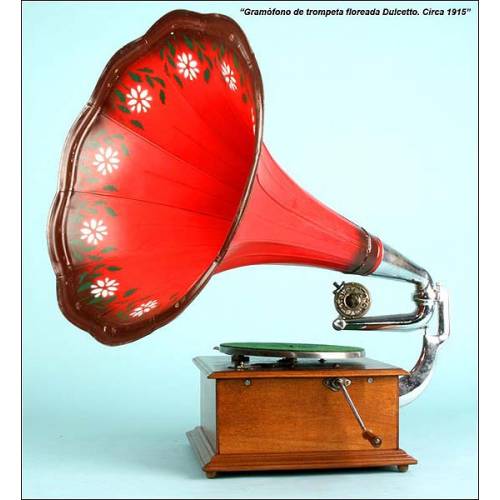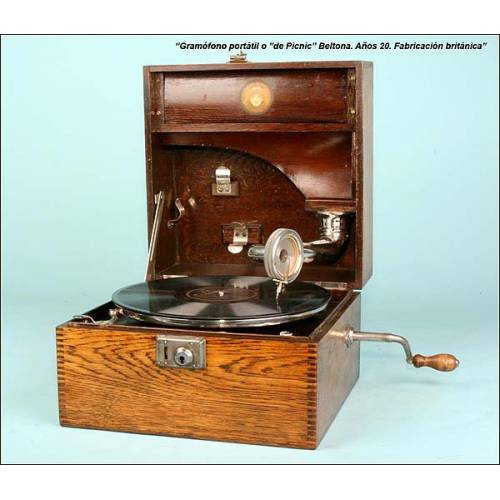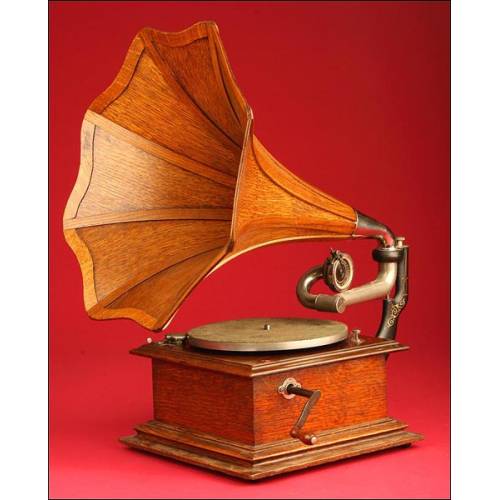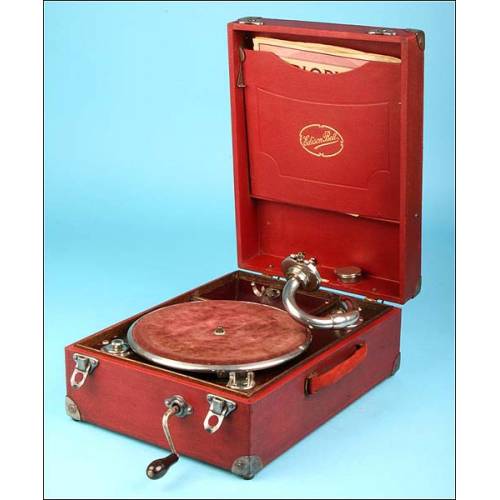C-915
Pathephone 6 horn gramophone. With two reproducers. France, 1915
Impressive Pathephone 6 horn gramophone with two interchangeable reproducers. Completely original. Works great.
Sold!
Stunning Pathephone 6 horn gramophone with two reproducers, coming from France and dated in 1915. This item keeps all its original finishes and component parts: the lacquer, the enamel and the hand-painted decorative motifs are the ones that were applied when it was manufactured more than one hundred years ago. It is a really ancient piece but remains in very good condition, showing also a fine working order. The motor includes a 2.5-inch spring that provides it with great power. It has been thoroughly cleaned and tuned, and today it can play old-time records with a neat and clear sound. One of the rear wooden legs is missing, but it has been replaced by a new small piece which keeps the box stable. The box is made of solid-oak wood and boasts a neoclassic-style design with hand-carved decoration and delicate exempt columns at the corners. The top plank and the base are darker than the sides, creating a fine color combination. We can see the original Pathé decal at one side, a gorgeous colorful motif that depicts a discus thrower with a gramophone record in front of an earth globe. The decal is perfectly preserved. The beautiful Morning Glory metal horn bears a lovely aquamarine-colored enameled finish with golden nerves. It is connected to the silvery-metal arm, supported in turn by a black metal elbow with hand-painted golden details. The gramophone includes two interchangeable reproducers (one with a sapphire needle and another one with a steel needle) to play two different types or records. Decorative and authentic, this Pathephone 6 horn gramophone with two reproducers will shine in any living or music room for its charismatic presence. Measurements: Box: Side: 13.8 in / 34.5 cm. Height: 6 in / 15 cm. Horn: Length: 25.2 in / 63 cm. Mouths Width: 16.4 in / 16 cm.Pathé Fréres - History The company was founded as Société Pathé Frères in Paris, France in 1896, by the four brothers Charles, Émile, Théophile and Jacques Pathé. During the first part of the 20th century, Pathé became the largest film equipment and production company in the world, as well as a major producer of phonograph records. Charles Pathé had helped open a gramophone shop in 1894 and established a phonograph factory at Chatou. Having decided to expand the record business to include film equipment, the company expanded dramatically. To finance its growth, the company took the name Compagnie Générale des Établissements Pathé Frères Phonographes & Cinématographes. In 1902, Pathé acquired the Lumière brothers' patents; by 1909, they had built more than 200 movie theaters in France and Belgium. By the following year they had facilities in Madrid, Moscow, Rome and New York City plus Australia and Japan. Prior to the outbreak of World War I, Pathé dominated Europe's market in motion picture cameras and projectors.

